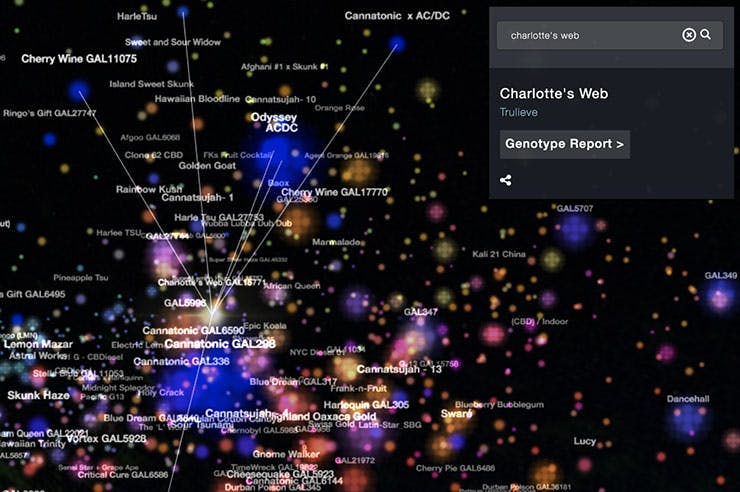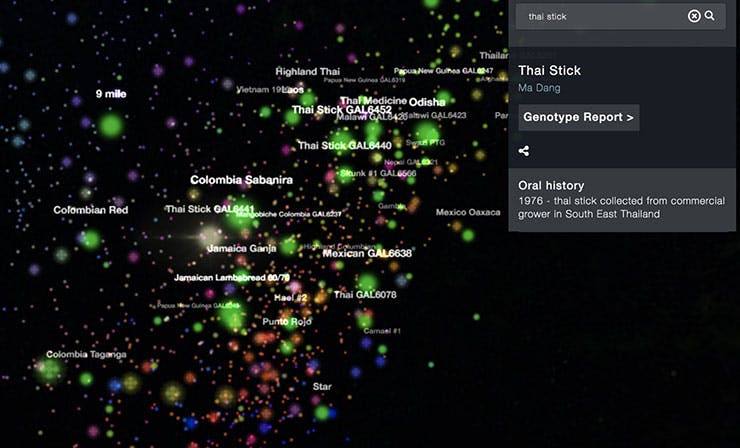
Representative sample of the overall population of Cannabis sativa.
Though cannabis may all be classified as Cannabis sativa, which we discussed in part one, there are still lots of ways to talk about the genetic variation within the species from a scientific perspective. One way has to do with genotype and phenotype, also covered in part one. Another way to talk about it has to do with its populations and how those populations reproduce.
At a high level, cannabis plants all fit into a single population, which contains a wide variety of cultivars and landraces, each with a different set of phenotype expressions. From this nomenclature perspective, hemp that has traditionally been used for fiber is a subpopulation of C. sativa.
Let’s break it down:
Populations
Organisms, including cannabis, exist within populations. When populations of organisms are physically separated, they evolve and adapt to become genetically distinct from one another. These distinct subpopulations can still interbreed; they just exhibit different traits.
Subpopulations
Cultivars group genetically into a few different subpopulations. For example, some of the commonly found high-CBD varieties (many of which have names like AC/DC, Harle-Tsu, and Cannatonic) are genetically similar and form a small subpopulation. This small subpopulation is in high demand, as high-CBD varieties are becoming increasingly desirable in the recreational and medical markets.
As mentioned above, industrial hemp is also a subpopulation of cannabis — one that is grown specifically for its fiber or seed oil and typically has very low THC quantities.

A screenshot of the CBD subpopulation in the Phylos Galaxy.
Landraces vs. Cultivars
When cannabis becomes localized to a particular region, it’s referred to as a landrace. Landraces have typically undergone local adaptation, exhibiting traits that allow the plant to survive and thrive within the unique environmental conditions of the region.
Cannabis landraces group somewhat by geography. For example, there are landrace varieties from SE Asia that are more genetically similar to each other than they are to a cluster of samples from Africa.
Cultivars, or cultivated varieties, were originally formed when seeds from landrace varieties were taken from their original environments, sometimes hybridized with other varieties, and selectively bred for desired traits. In the past 30–40 years, most new cultivars were created by crossing two existing cultivars.

A screenshot of the landrace subpopulation in the Phylos Galaxy.
Seeds vs. Clones
In cannabis, it’s possible to create identical genotypes through clonal propagation, or cloning. In fact, cloning — paired with a consistent environment — is the the only way to ensure consistency for a cannabis grow.
Most agricultural crops, however, are grown from seed. In these crops, breeders have developed elite inbred lines that contain very little genetic variation. From these elite lines, two different parental lines are chosen to create F1 hybrid offspring. Those hybrid plants are nearly identical genetically and express consistent, predictable phenotypes.
Cannabis is a highly genetically diverse plant not only within the overall population, but within subpopulations and varieties as well. Thus, neither elite inbred lines nor lines stabilized for a suite of traits are currently available. Progeny from any kind of cross (including backcross, sibling cross and selfing) are likely to have dramatically variable phenotypes.